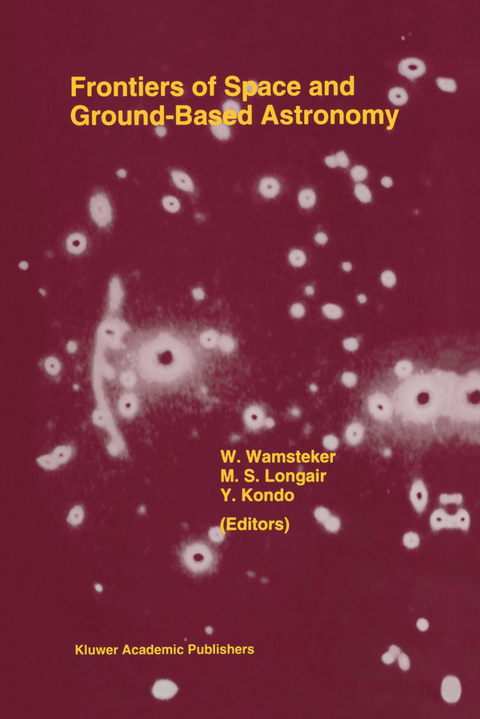
Frontiers Of Space And Ground-Based Astronomy
The Astrophysics of the 21st Century
Seiten
1994
Springer (Verlag)
978-0-7923-2527-7 (ISBN)
Springer (Verlag)
978-0-7923-2527-7 (ISBN)
ROSAT Observations G. HASINGER Max-Planck-Institut flir extraterrestrische Physik, D-85740 Garching, Germany Abstract. This review describes the most recent advances in the study of the extragalactic soft X-ray background and what we can learn about its constituents. The deepest pointed observations with the ROSAT PSPC are discussed. The logN-logS relation is presented, which reaches to the faintest X-ray fluxes and to the highest AGN surface densities ever achieved. The N(>S) relation shows a 2 density in excess of 400 deg- at the faintest fluxes and a flattening below the Einstein Deep Survey limit. About 60% of the extragalactic background has been resolved in the deepest field. Detailed source spectra and first optical and radio identifications will be discussed. The results are put into perspective of the higher energy X -ray background. Key words: X-rays, background radiations, active galactic nuclei. 1. Introduction The extragalactic X-ray background (XRB), discovered about 30 years ago, has been studied extensively with many X-ray experiments, in particular with the satel lites HEAO I and II (see ego Boldt 1987) and with ROSAT (e. g. Hasinger et aI. , 1993). Figure 1 shows a compilation of some of the most recent spectral measure ments for the X-ray background. Over the energy range from 3 to about 100 keY its spectrum can be well approximated by an optically thin thermal bremsstrahlung model with kT ~ 40 keY, while at lower X-ray energies a steepening into a new component has been observed observed (e. g.
Editorial. Part 1: I. Achievements of the Present Generation of Space Observatories. II. Achievements of the Present Generation of Ground--Based Telescopes. III. Stars. IV. Interstellar Medium and Galaxies. V. Cosmology. VI. Observations at Many Wavelengths: Panel Discussion on Coordination of Observations at Many Wavelengths. VII. The New Generation of Large Ground--Based Telescopes. VIII. The New Generation Space Telescopes. IX. New Technologies for Astronomy. X. Summary, Priorities and Objectives for the 21st Century. Part 2: XI. Stars. XII. Interstellar Medium and Galaxies. XIII. New Technologies for Astronomy. Index.
| Erscheint lt. Verlag | 31.8.1994 |
|---|---|
| Reihe/Serie | Astrophysics and Space Science Library ; 187 |
| Zusatzinfo | XXIII, 750 p. |
| Verlagsort | Dordrecht |
| Sprache | englisch |
| Maße | 155 x 235 mm |
| Themenwelt | Naturwissenschaften ► Physik / Astronomie ► Astronomie / Astrophysik |
| Naturwissenschaften ► Physik / Astronomie ► Relativitätstheorie | |
| ISBN-10 | 0-7923-2527-3 / 0792325273 |
| ISBN-13 | 978-0-7923-2527-7 / 9780792325277 |
| Zustand | Neuware |
| Haben Sie eine Frage zum Produkt? |
Mehr entdecken
aus dem Bereich
aus dem Bereich
Grundlagen, Anwendungen in Astrophysik und Kosmologie sowie …
Buch | Softcover (2022)
Springer Spektrum (Verlag)
CHF 69,95
die Geschichte und Erforschung unserer Galaxie
Buch | Hardcover (2023)
C.Bertelsmann (Verlag)
CHF 40,80
Von Hubble-, James-Webb- und anderen Großteleskopen bis zu …
Buch | Softcover (2024)
Springer (Verlag)
CHF 32,15


